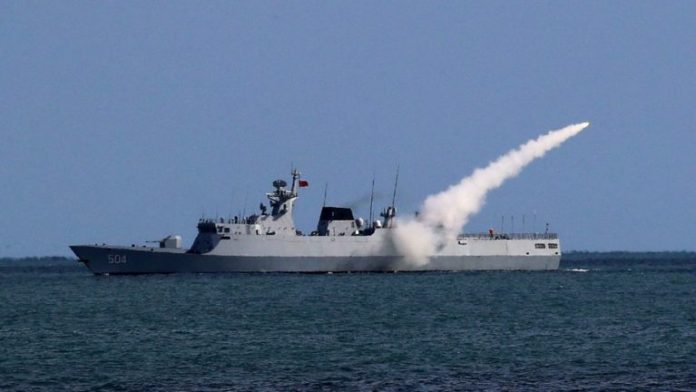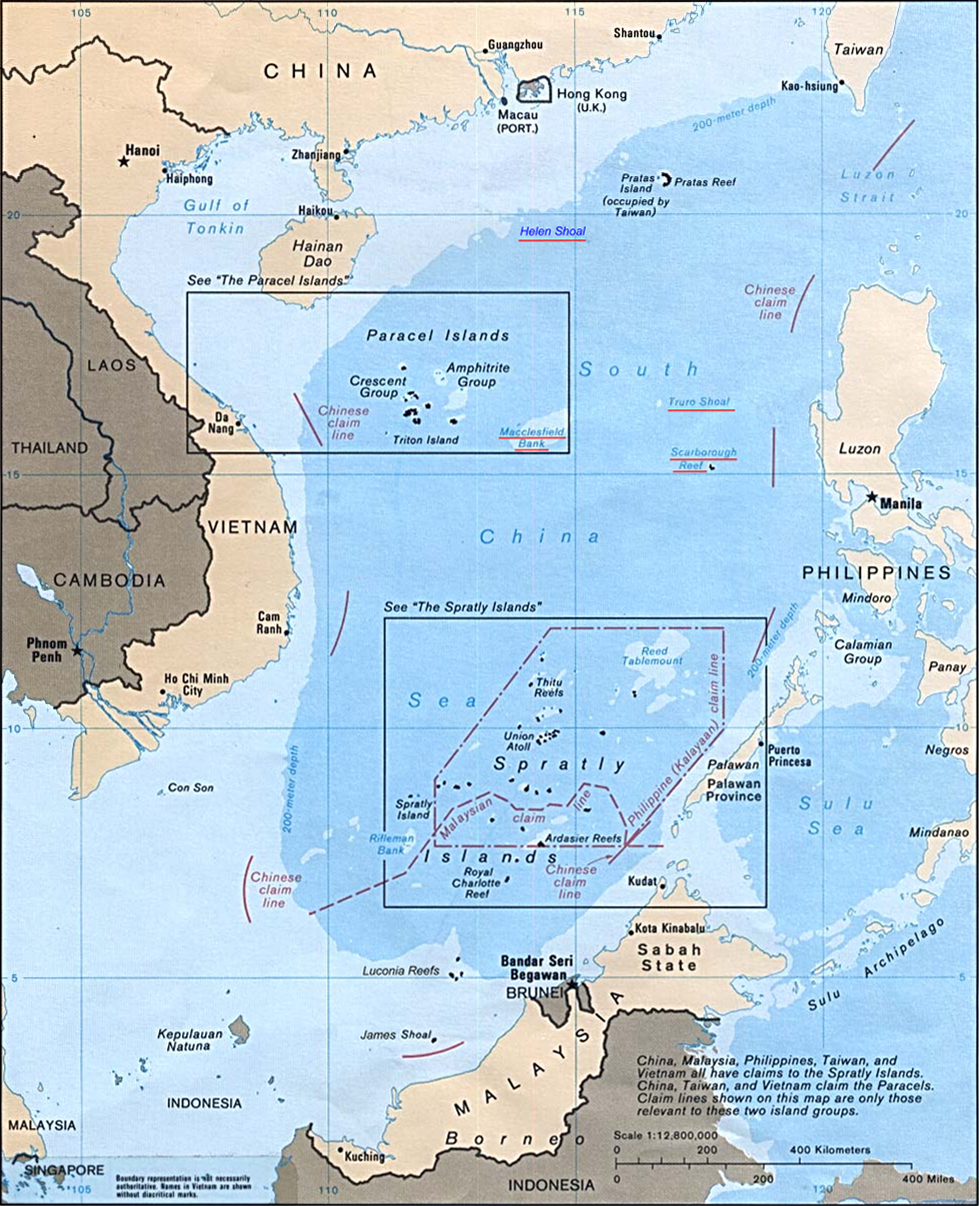Global Research, March 16, 2021
All Global Research articles can be read in 27 languages by activating the “Translate Website” drop down menu on the top banner of our home page (Desktop version).
***
US forces are deployed in parts of the world not its own to wage forever wars by hot and/or other means against nonbelligerent nations threatening no one. That’s how its imperial scourge operates, an unparalleled threat to everyone everywhere.
For the third consecutive year, the Beijing-based South China Sea Strategic Situation Probing Initiative (SCSPI) published a report on unacceptable US military activities in the South China Sea.
In recent years, they’ve been increasing. The latest SDSPI report discusses US military operations in 2020.
Calling them “intense” last year, they included three carrier strike groups, two amphibious ready groups, strategic bombers, nuclear attack submarines, reconnaissance flights near Chinese territory, and military exercises for what the Pentagon calls “Dynamic Force Employment” to deter China.
According to SCSPI’s director Hu Bo, the high intensity scale, number and duration of US military exercises in South China Sea waters last year were extraordinarily high compared to previous years.
According to Hu, dual US carrier group/warplanes exercises were “combat-oriented.”
“For example, the USS Ronald Reagan carrier repeatedly moved into and out from the South China Sea fast, and coordinated flank attacks with other carrier strike groups.”
“Second, US carriers operated in a wider area.”
“(T)he USS Theodore Roosevelt carrier strike group practiced operational application of expeditionary forces near the Zhongsha Islands for the first time.”
“Third, the dual carrier exercises were also pointed ones, as they were conducted at a sensitive time coinciding with exercises by the People’s Liberation Army (PLA) near the Xisha Islands and the Han Kuang exercises by the military on the island of Taiwan.”
P-8A anti-submarine warplanes and EP-3E electronic reconnaissance aircraft were involved.
All of the above and more are unjustifiably justified by so-called Freedom of Navigation pretexts.
They’re all about rehearsing war on China, notably by operating near its Xisha and Nansha islands, Taiwan, and waters near China’s mainland — what the SCSPI’s report called “sensitive areas,” including near PLA military facilities.
Reconnaissance flights used “fake” IDs, disguising themselves as civilian aircraft, what the SCSPI report called “gray operations.”
According to Hu, they increase the risk of “misjudgment” between PLA and Pentagon forces.
In 2020, the Pentagon conducted provocative “high frequency” island or reef-trespassing operations in the South China Sea, including transits through the Taiwan Strait 13 times.
Hu called the moves “dangerous signals to Taiwan independence” elements that threaten regional peace and stability.
So-called gunboat diplomacy is a longtime US belligerent practice.
Looking ahead, Hu believes that Biden regime hardliners will maintain hostile political, economic, and saber-rattling actions against China — heightening regional tensions instead of easing them.
While continuing “maximum pressure” on China, “the US is gradually losing such military dominance in the Western Pacific despite its evident military superiority globally, as China has been delivering much more targeted and effective countermeasures,” the SCSPI stressed.
What US hardliners call Chinese “threats and challenges” are invented, not real.
Pushing Beijing politically, economically and militarily risks confrontation by accident or US design.
What’s unthinkable is possible because of US rage to rule the world unchallenged by whatever it takes to achieve its imperial aims.
A Final Comment
Neither China nor Russia — or any other countries on the US target list for regime change — hold provocative military exercises off its east or west coasts or in gulf waters near its southern coastline.
If done, both wings of the US war party would consider them a casus belli and likely respond belligerently.
Separately, Biden regime secretary of state Blinken and national security advisor Sullivan will meet with their Chinese counterparts Yang Jiechi and Wang Yi in Anchorage, Alaska on March 18.
According to Blinken’s spokesman Price on Friday, “(w)e will certainly not pull any punches in discussing our areas of disagreement” — describing bilateral relations as “competitive (and) adversarial.”
*
Note to readers: please click the share buttons above or below. Forward this article to your email lists. Crosspost on your blog site, internet forums. etc.
Stephen Lendman is a Research Associate of the Centre for Research on Globalization (CRG).
VISIT MY WEBSITE: stephenlendman.org (Home – Stephen Lendman). Contact at lendmanstephen@sbcglobal.net.
My two Wall Street books are timely reading:
“How Wall Street Fleeces America: Privatized Banking, Government Collusion, and Class War”
https://www.claritypress.com/product/how-wall-street-fleeces-america/
“Banker Occupation: Waging Financial War on Humanity”
https://www.claritypress.com/product/banker-occupation-waging-financial-war-on-humanity/
Related Articles
THREATENING CHINA: South China Sea: U.S.-Japan Military Deployments Put Region At Risk
External forces’ intervention in the South China Sea disputes has gradually become a reality despite China’s opposition against the externalization of the disputes. Last week, the US and Japan reached a new agreement on the joint use of the US military bases in the Pacific region. According to media reports,…
US Defence Secretary’s Trip to Asia Sets Stage for New Provocations against China
China is Not Leaving the “South China Sea”
17 March 2016The original source of this article is Global Research
Copyright © Stephen Lendman, Global Research, 2021




















